When it comes to 2021 industry forecasts, the most resonant word I hear is optimistic. But that word can become hollow if it doesn’t have any substance backing it up. Now I’ve read reports that residential service repair and remodel may remain constant with a slight increase in early 2021. On the other hand, according Read more
Featured Articles
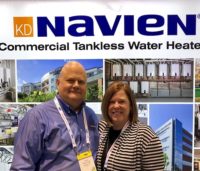
When it comes to 2021 industry forecasts, the most resonant word I hear is optimistic. But that word can become hollow if it doesn’t have any substance backing it up. Now I’ve read reports that residential service repair and remodel may remain constant with a slight increase in early 2021. On the other hand, according to AIA info, there is a predicted 5.7% decrease in construction spending—hotels, office buildings, recreation—for 2021, with pent-up demand leading to anticipated growth in 2022.
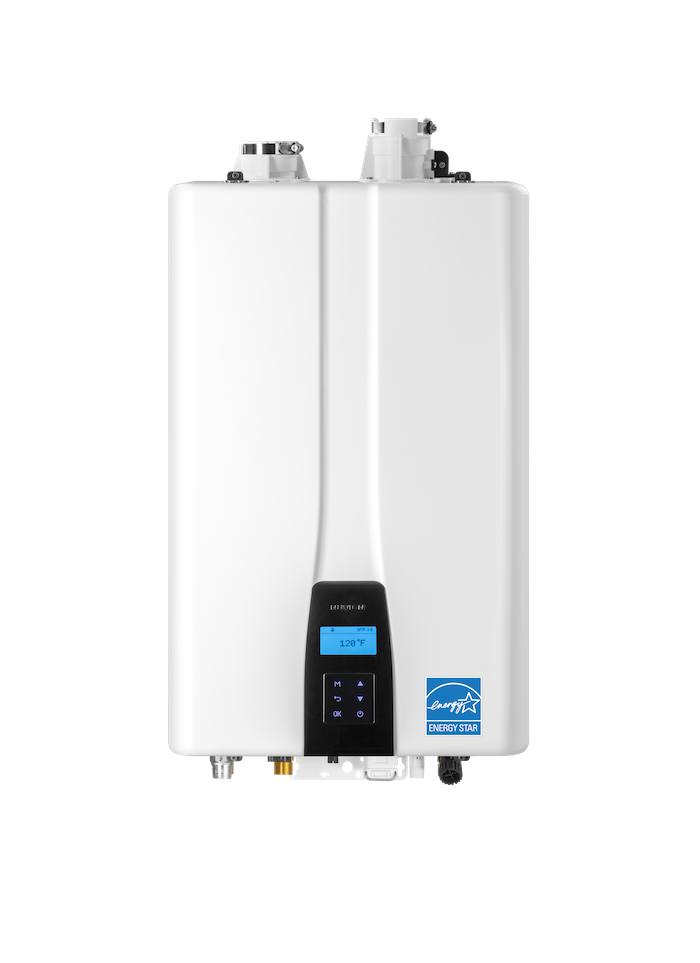 Mechanical Hub continues its Forecast Series with Brian Fenske, director of commercial business, Navien. According to Fenske, the outlook for the tankless looks strong as the recent southern storms “had a huge impact and pushed new units into the market because of availability.” But Fenske cautions, “Raw materials may become a factor in the future.”
Mechanical Hub continues its Forecast Series with Brian Fenske, director of commercial business, Navien. According to Fenske, the outlook for the tankless looks strong as the recent southern storms “had a huge impact and pushed new units into the market because of availability.” But Fenske cautions, “Raw materials may become a factor in the future.”
Yet, today, Navien’s suite of tankless and boiler units continues to grow and improve, evidenced by the recent release of its NPE-2 (left) Series tankless water heaters and its NCB-H condensing combi boiler, NFC-H condensing fire tube combi boiler and NFB-H condensing fire tube boiler.
We sat down with Fenske recently and he talked about the state of the industry.
MH: What does the short-term economy look like as it relates to Navien?
FENSKE: I concur with the residential hopes and optimistic outlook, many housing markets remain strong, as well as the economy in general. This drives the new and existing housing and construction improvements, upgrades and replacement markets.

Fenske with his wife, Julie.
MH: What are some indicators you look at to determine trends, movements, etc.?
FENSKE: I watch several construction reports, mainly commercial being my responsivity and arena. Regarding commercial, nonresidential building starts fell 11% during the month of December, while total nonbuilding starts were 5% lower. This while residential starts were essentially flat over the month of December. Starts were lower in three of the four regions in December; the South Central was the only region to post an increase. For the full year of 2020, total construction starts fell 10% to close to $775 billion. Nonresidential building starts saw the steepest drop, losing 24%, while nonbuilding starts fell 14%. Residential construction starts ended 2020 up 4% thanks to strong single family activity.
MH: I read somewhere that at the rate the U.S. is distributing the vaccine, we should be back to “normal” by 2024. Perhaps that’s a bit overly dramatic, but how does (has) Navien positioned itself from the “fallout” of COVID-19?

Fenske with a friend during the Builder’s Show last year right before COVID hit the U.S.
FENSKE: Navien continues to do business as usual, as well as adjust to the new ways we all must adhere to, to perform our job and its functions. I myself cannot wait to get back to personal interactions and travel. But in the meantime our adjusted way of life and concerns for everyone’s safety has surely made our business climate a lot different.
MH: Is the only certainty heading into early 2021 uncertainty? How do you forecast and budget for such uncertainty? (Or is it fairly certain at this point during the pandemic?) (Certainly, a lot of certainty here, lol)
FENSKE: My largest concern is mostly that new start construction follows a delayed schedule. If planning is and was off 10-25% in 2020, depending on construction class, this will have a definite effect on the future. As most commercial planning and design is planned 6-18 months into the future, 2021 will surely see a slowdown as an effect of less construction being booked for the future. However, I have to and continue to remain optimistic that retrofit and design build will continue to carry the industry and look forward to a not so much dismal year ahead. Navien will continue to forecast growth in product sales and market share sticking to our plan that we will continue to succeed through our employees, partners and especially our new product offerings in 2021.
MH: Without getting overly political, does a change at the presidential level (and congress) change the outlook for your company, if at all? (Infrastructure, regulations, green energy initiatives, etc.)
FENSKE: There is always concern when there are political changes. I don’t think anyone could pick the perfect president, as well as the members of Congress. We have to watch and observe as well as participate to further the successes of our industry and country.
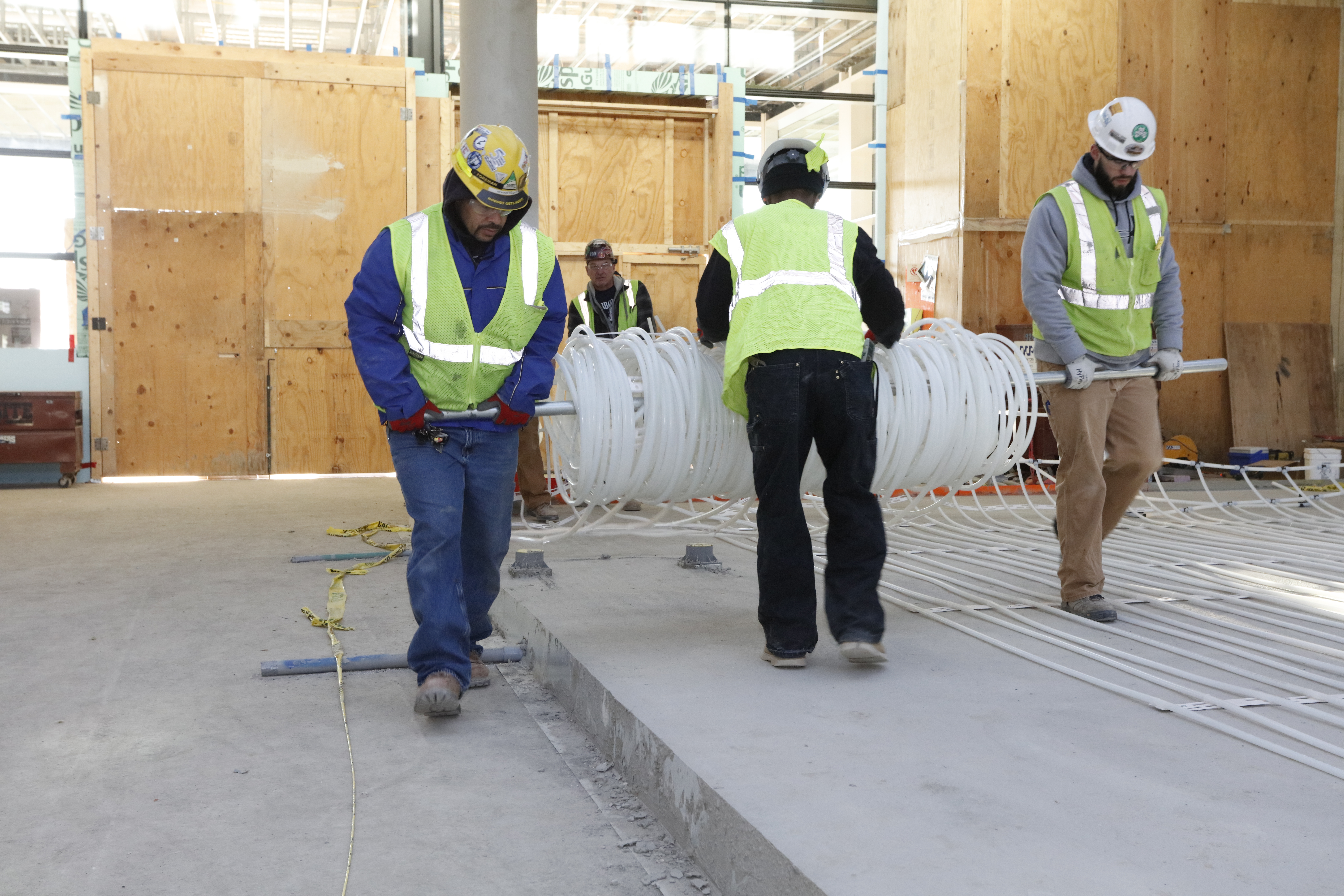
Designed by Lord Norman Foster of Britain along with architects from DLR Group | Westlake Reed Leskosky, the $515 million Health Education Campus for the Case Western Reserve University and Cleveland Clinic in Cleveland, Ohio, provides a state-of-the-art learning space to usher in a new era of teaching for medical, nursing, dental, physician assistant and Read more
Designed by Lord Norman Foster of Britain along with architects from DLR Group | Westlake Reed Leskosky, the $515 million Health Education Campus for the Case Western Reserve University and Cleveland Clinic in Cleveland, Ohio, provides a state-of-the-art learning space to usher in a new era of teaching for medical, nursing, dental, physician assistant and social work students.
The campus features a 485,000-square-foot Sheila and Eric Samson Pavilion and a 132,000-square-foot School of Dental Medicine to treat patients under the supervision of dental faculty. The pavilion features a 27,000-square-foot central atrium that draws maximum light from a specially engineered roof. It also includes a $5 million conference center with a 7,000-square-foot auditorium and a 4,800-square-foot lecture hall.
With all the expansive spaces and high ceilings, the buildings required a heating and cooling system that would provide exceptional comfort along with energy efficiency. To ensure occupants’ comfort and the buildings’ improved indoor environmental quality (IEQ), the design included a radiant heating and cooling system from Uponor, featuring Wirsbo hePEX™ pipe in a custom-designed, prefabricated network of Radiant Rollout™ Mats.

Cleveland Health Education Clinic, Ohio | Radiant floor heating install with Radiant Rollout Mats in 2018
Efficient installation solution saves time, reduces materials, and protects workers
Designed for large-scale radiant heating and cooling commercial projects, Radiant Rollout Mats provide faster, easier, more consistent radiant heating and cooling installations that can save up to 85% in installation time and add greater job-site safety for workers.
The mats arrive on the job site in large rolls that installers simply unroll and fasten to the concrete surface. The solution reduces wire ties and staples by up to 40%, which also limits bending, kneeling, and body strain for workers.
Already pre-pressurized at the factory, the mats have the option to include a reverse-return header, which can reduce required manifold ports by more than 60%. There is also the option to connect directly to traditional radiant manifolds to meet project specifications. The mats feature Wirsbo hePEX™ oxygen-barrier PEX pipe connected to ProPEX® engineered polymer (EP) fittings, which are safe for burial in the slab.
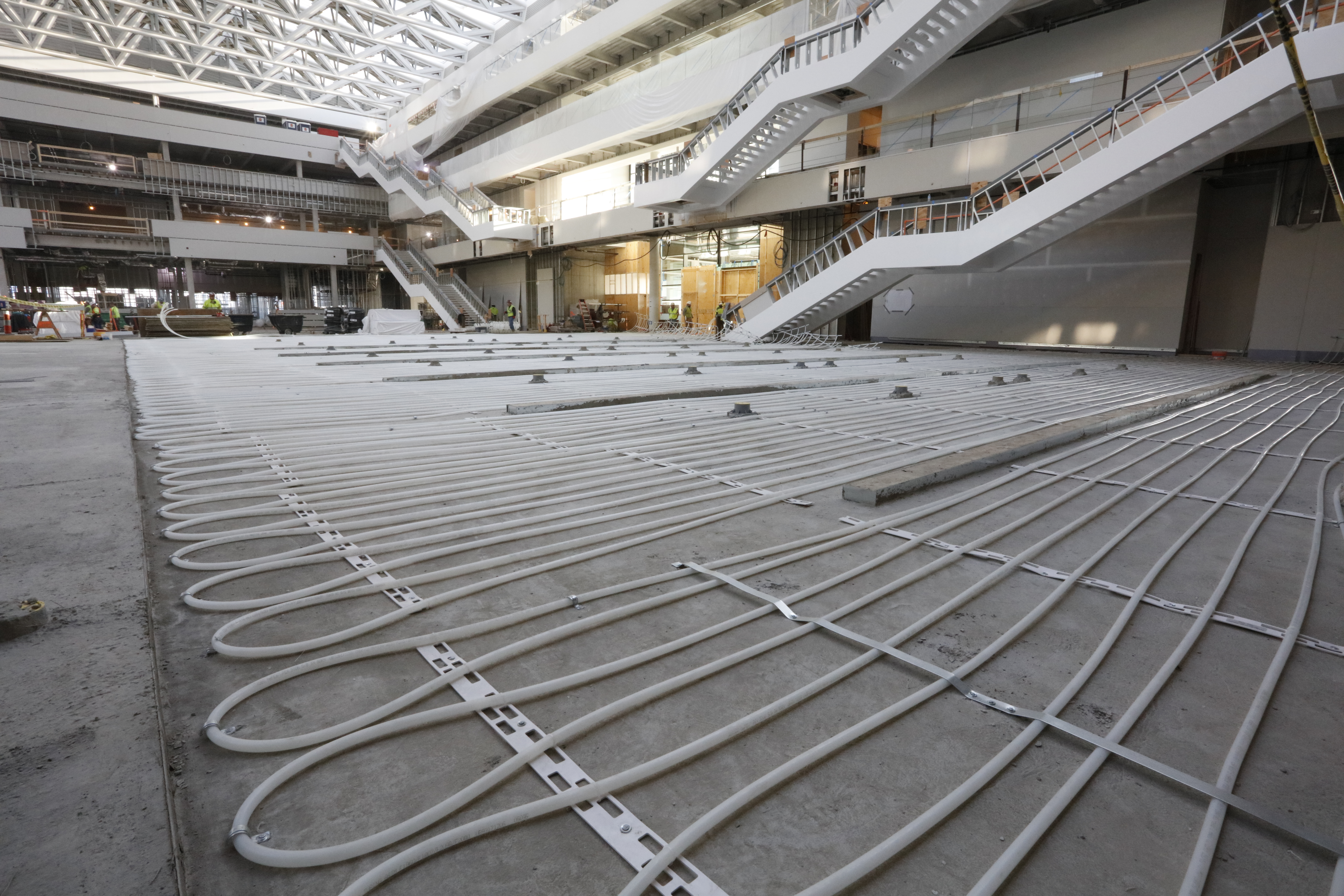
Cleveland Health Education Clinic, Ohio | Radiant floor heating install with Radiant Rollout Mats in 2018
Watch this time-lapse video to see how quickly installers were able to expedite the Wirsbo hePEX piping installation in the Health Education Campus project using the Radiant Rollout Mats, installing 55,860 lineal feet of pipe in just eight days.
With the faster installation, there was less impact to the concrete pour schedule, helping to keep the project on track, and workers were able to install easier with less strain on their bodies.
Healthier, more energy-efficient comfort with radiant
With a newfound focus on indoor environmental quality for commercial — and especially healthcare — buildings, radiant is quickly becoming the heating and cooling system of choice for large commercial structures.
For the end user, the radiant heating and cooling system provides greater comfort using less energy. That’s because the heat-transfer capacity of water in a hydronic radiant system is 3,500 times greater than air. Thus, a radiant system that uses a circulator to move water (in lieu of a fan to move air) can achieve the same heat transfer using significantly less energy. This means occupants are more comfortable and building owners benefit from lower energy costs.

Cleveland Health Education Clinic; Ohio; Radiant floor heating install; Radiant Rollout Mats; RROM; 2018 install
Additionally, because hydronic radiant heating systems use pumps to move water instead of fans or blowers to push air, the system does not circulate viruses, allergens, or odors throughout the indoor space. This provides better indoor air quality, which is especially important in healthcare facilities.
Lastly, because radiant keeps the comfort near the floor where people are located, it provides an even, consistent temperature without hot or cold spots in a space. And, because radiant systems are designed in zones, it offers maximum occupant comfort control for each individual space — another important benefit for occupants in healthcare buildings.
To learn more about PEX piping solutions for healthcare applications, including domestic water, hydronic distribution, and radiant heating and cooling, visit uponor-usa.com/healthcare. To learn more about the benefits of radiant systems in commercial applications, visit the Uponor Commercial Radiant Solutions page.
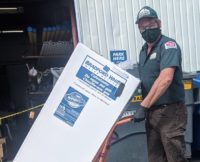
It’s that time of year again where media, prognosticators and media prognosticators try to look into the immediate future to predict, and make sense of, the short-term economy. And, yes, even in this uncertain climate. According to the Air-Conditioning, Heating & Refrigeration Institute (AHRI), U.S. shipments of residential gas storage water heaters for January 2021 Read more
It’s that time of year again where media, prognosticators and media prognosticators try to look into the immediate future to predict, and make sense of, the short-term economy. And, yes, even in this uncertain climate.
According to the Air-Conditioning, Heating & Refrigeration Institute (AHRI), U.S. shipments of residential gas storage water heaters for January 2021 increased 3.4 percent to 397,342 units, up from 384,213 units shipped in January 2020. Residential electric storage water heater shipment saw a 2.4 percent increase in January 2021 to 395,640 units, up from 386,291 units shipped in January 2020.
Commercial gas storage water heater shipments decreased 7.8 percent in January 2021 to 6,642 units, down from 7,207 units shipped in January 2020. Commercial electric storage water heater shipments decreased 7 percent in January 2021 to 11,737 units, down from 12,626 units shipped in January 2020.
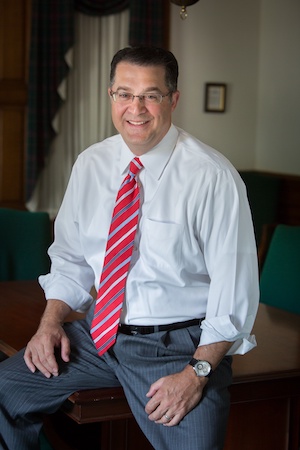 Having said all of that, Mechanical Hub decided to go right to the source to get an up-close sense of how the market is faring. We continue our Forecast Series with Bruce Carnevale, president & CEO, Bradford White.
Having said all of that, Mechanical Hub decided to go right to the source to get an up-close sense of how the market is faring. We continue our Forecast Series with Bruce Carnevale, president & CEO, Bradford White.
MH: When it comes to 2021 industry forecasts, the most resonant word I hear is optimistic. That word can become hollow if it doesn’t have any substance backing it up. I’ve read reports that residential service repair and remodel may remain constant with a slight increase in early 2021. What does the short-term economy look like as it relates to BW?
CARNEVALE: In a word, challenging. While demand for our core residential products remains strong, material and labor costs have risen substantially. Labor availability for manufacturers is still a significant problem and has been exacerbated by COVID-19 complications and government policies. Steel prices are at or near all time highs, and supply is becoming an issue for some manufacturers. These factors lead to longer lead times, higher prices to the end user, and product shortages.
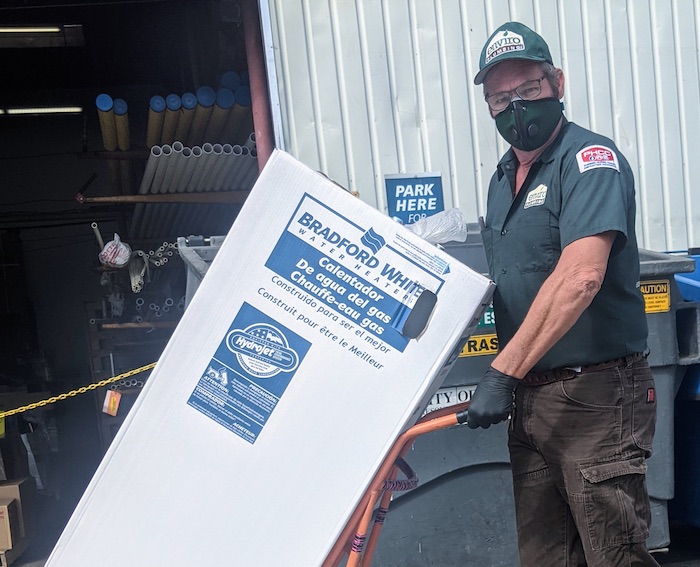
We know intuitively that the “nesting” effect has led to increased demand because household appliances are being use much more that they normally would be. There is no good data on magnitude of the increased demand, nor how long it will last.
Commercial demand has recovered slightly, but with commercial businesses still in some state of shutdown in much of the country, we don’t see that segment starting to recover until the second half of 2021. It is unlikely that the commercial segment will fully recover to pre-pandemic levels until after 2022 because so many businesses will permanently shut down as a result of the pandemic-forced shutdowns.
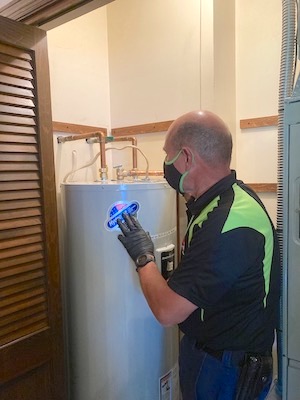 MH: What are some indicators you look at to determine trends, movements, etc.?
MH: What are some indicators you look at to determine trends, movements, etc.?
CARNEVALE: We look at traditional indicators such as housing starts re-sales, mortgage rates, CPI, consumer confidence, manufacturing output and inventories, unemployment rates, etc. Several years ago, we incorporated student loan debt into our analyses since it has such a significant impact on first time homebuyers. Additionally, we closely follow regulations and all levels and social preferences to determine their impact on product trends.
MH: I read somewhere that at the rate the U.S. is distributing the vaccine, we should be back to “normal” by 2024. Perhaps that’s a bit overly dramatic, but how does (has) BW positioned itself from the “fallout” of COVID-19?
The honest answer is that nobody really knows when we will be back to normal. Even after we are, there will be lasting effects from the pandemic. We are following the data and trends closely and adjusting our strategy accordingly. We expect some pre-pandemic trends to change significantly. For example, the trend toward urbanization will change as more people are able to work from home. This leads us to believe that the housing new construction will shift away from multifamily towards single family as people can move further out from cities.
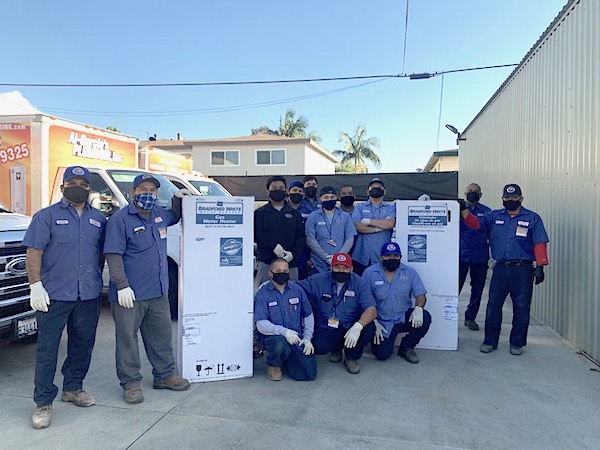
Additionally, we are solidifying supply chain and strengthening our contingency plans, further developing our own work force, and investing significantly in R&D to bring relevant, innovative products to the post-pandemic market.
MH: Is the only certainty heading into early 2021 uncertainty? How do you forecast and budget for such uncertainty? (Or is it fairly certain at this point during the pandemic?)
CARNEVALE: Uncertainty has made forecasting for 2021 is as much art as it is science. We used an immense amount of data, both historical and forward-looking, and applied significantly more assumptions than we typically would. We also included insights derived from some original research projects we commissioned.
MH: Without getting overly political, does a change at the presidential level (and congress) change the outlook for your company, if at all? (Infrastructure, regulations, green energy initiatives, etc.)
CARNEVALE: Yes. It is no secret that the Biden administration will have a very different policy positions than the Trump administration. Some of the expected changes may be helpful, and others will present challenges. Infrastructure legislation, for example, will be good for our industry. We know there will be a focus on green energy initiatives, and that too can be good for our industry if they are thoughtfully applied. The regulatory environment will become more challenging, but we are hopeful that the new administration will partner with manufacturers in developing new regulations.
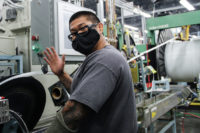
Mechanical Hub continues its series of exclusive Q & A sessions with industry leaders and players to get their views on the future, and living in a COVID world, and an insight into the market in 2021. The American Supply Association released its annual sales report for 2020 and the ASA Pulse sales report shows Read more
Mechanical Hub continues its series of exclusive Q & A sessions with industry leaders and players to get their views on the future, and living in a COVID world, and an insight into the market in 2021.
The American Supply Association released its annual sales report for 2020 and the ASA Pulse sales report shows member distributor respondents enjoyed an average sales growth of 4.4% and a median growth of 6% during the fourth quarter of 2020; however, distributor respondents doing business primarily in the industrial pipe, valves and fittings channel continued to report declines.
Total ASA distributor respondents reported a median 1.4% sales growth for the full year 2020 vs. 2019, and inventory levels rose 4.9% in the fourth quarter of 2020 compared to the fourth quarter of 2019.
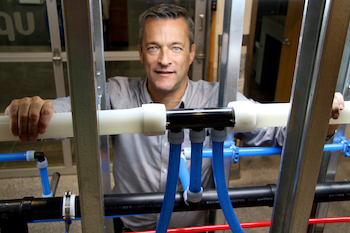
Bill Gray
This week, Mechanical Hub features Bill Gray, president, Uponor North America to get his company’s pulse for 2021. You get the sense that it’s time to move forward and the time is now to take full advantages of the opportunities that lie ahead.
MH: While putting together the Mechanical Hub annual forecast last year, you were one of the only ones to go on record who took COVID into account in the short-term up until that point in mid-January 2020. What were you hearing?
GRAY: We were starting to hear “noise” in the supply chains. You have to understand, I have a mother in the background who was reading all the articles, warning me about traveling to Europe and Hawaii. What sounds like wisdom from me is actually deriving from my mother yelling in the background to stay home.
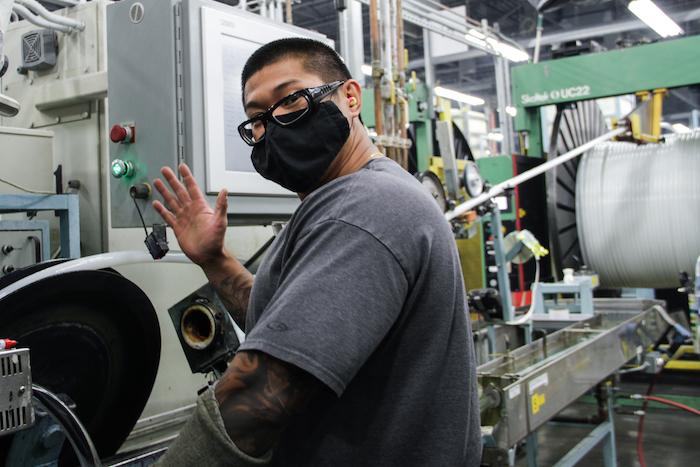
MH: Most of the residential guys are doing fine, but there are hiccups with commercial and industrial sectors. What does the short-term economy look like for Uponor? What are the economic indicators telling you?
GRAY: This is a question we try to answer on a weekly or bi-weekly basis with our European parent company. We are currently enjoying a very healthy level of business. In 2020, we hit the brakes in April after a great first quarter. By the end of May, it was all back in a big way. All that demand that fell off, people decided to get that work done. Through Q3, it was good volume.
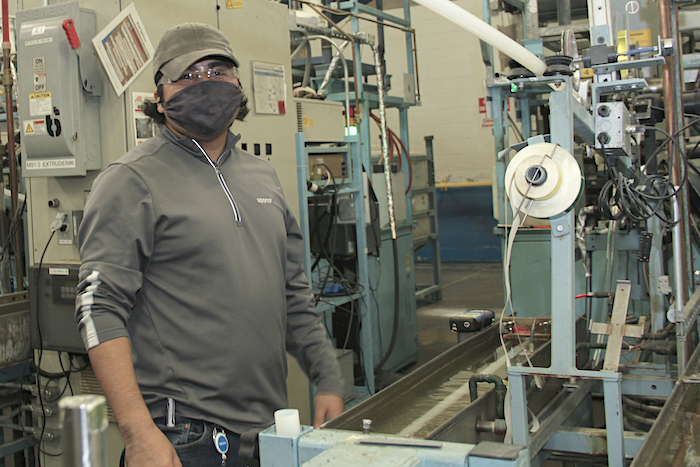
We knew there was more volume going into residential. For commercial, no one was stopping projects already coming out of the ground. I don’t know when we will see commercial projects begin to tail off. As you know, 12, 18, or 24 months is nothing to get a commercial project rolling. What I am told is that there are fewer projects to quote in commercial order books. Certain segments are more adversely impacted than others. For example, it is hard to imagine you are going to build a new hotel if you haven’t already broken ground.
I am one of those guys who normally spends 75 to 100 nights a year in a hotel. In 2020, I spent maybe 20, and all of those were at the beginning of the year. So that challenge to commercial will keep getting pushed forward. They will still need to perform retrofits, and that might open up some opportunities.
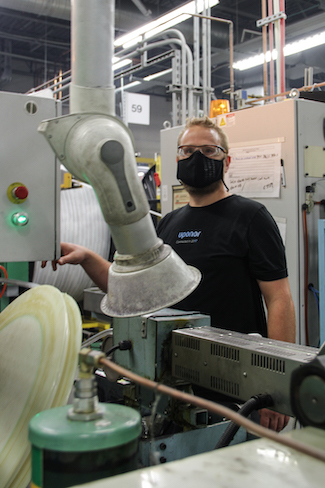
Residential is on fire, supported by demographic demand that has been held back. We often speak of “natural” household formations coming in at 1.5 million annually. We never achieved that level coming out of the past recession, so the demand gets pushed forward. Meanwhile, existing homes valued between $250,000 and $500,000 are going for the asking price or higher and don’t last very long at all on the market. Builders of new homes are building into their 2022 and 2023 land plans currently.
One of the factors that may bring down that activity is that builders cannot get land fast enough, as they burn up all of their lots now. So, we are in a window now, and everyone is building homes as fast as they can, and prices are slowly climbing. Input prices are crazy. Truss packages—nobody builds trusses on the job site anymore—are going for 3X or 4X vs. 2020 levels. Insulation deliveries are crazy; all the HVAC and mechanical stuff—crazy. Our friends over at Bradford White are at six to eight weeks currently.
There is demand out there. RWC just released their numbers, but had great sales growth last year with more exposure to DIY through Home Depot and Lowe’s. We know the latter pair are doing very well. We are seeing a lot of switch-in-spend right now. “I cannot go on vacation, so I am going to work on my house and yard.” Many cannot get a contractor to do the work, and if they do, the pricing can be very high. “I’m willing to take the work, but it will cost you.”
MH: As far as inventories and supply, how is Uponor faring?
GRAY: We shut down the plant for eight days in April and laid off some staff in distribution and manufacturing. We have them back, plus. We are up to a month behind right now against a strong order volume. We were famous for delivering our product on time and in full. The problem definitely relates more to residential—smaller-diameter pipe.
It is what it is right now, but I question how long this activity can be sustained. Most companies, from what I have read, are saying like the first half, maybe through Q3 2021. But there is no election this year. We will see what happens with the stimulus packages. Do they finally do something on infrastructure? We need infrastructure work—now is the time to do those projects. Money will never be cheaper, nor labor more plentiful. But if you wait until a full economy, the challenges will be much greater.
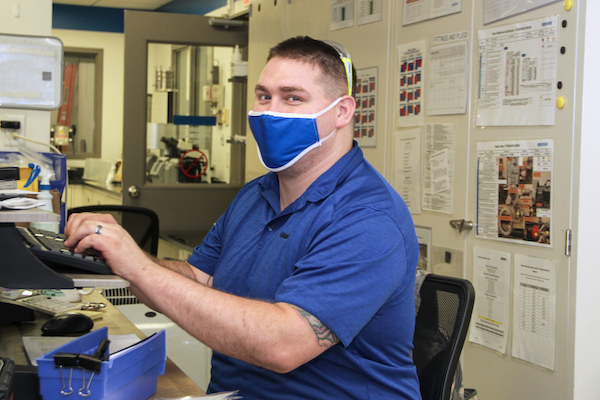
I think if the federal government plays this right, understanding the dynamics of the market today—like in 2008-09, shovel-ready projects that will keep the economy going—I think construction could be really good—or really challenging. A lot of variables have not played out yet.
MH: How are you steering the ship to deal with COVID? You have gotten through 2020, is it all systems go? Anything different?
GRAY: What we did as well as or better than anyone else—not just in our industry, but in other industries too—is that we got on top of the problem early with our COVID Task Force. Originally, we were focused on problems in the supply chain, but that transitioned very quickly to our employees’ health and safety, as COVID hit the United States. We started looking at where our employees were traveling for work, creating an awareness, telling them if you are going to an area that may be compromised, be sure you are taking the proper precautions for yourself and your colleagues.
We were able to keep the plants open, because we were designated—along with most of new-construction markets and building products—as essential services. We have been promoting health and safety first, then the continuity and integrity of our factories, making sure we are able to ship products to customers. That is how we cascaded these priorities.

At Uponor, we went virtual on Friday, March 13, 2020, with the idea that we should test our systems in case we must work from home at some point, and everything worked out well from an IT perspective. As it turned out, ironically, the mandate to work from home came down over that weekend.
Next, we did a live migration to Microsoft Teams, which was a huge improvement over our previous platform.
As the situation has “stabilized” now—as much as it can be stabilized—we are continuing monthly calls with all employees. The leadership team and I continually explore what’s new, what’s different? When can we expect to come back to the office? What’s coming back going to look like? We try to manage all that.
From my perspective, we won’t be coming back to anything normal probably until 2022. My boss from Finland visited the United States the week before the AHR Expo in 2020. I don’t expect to see him in the United States at all in 2021. It’s been spotty in that part of the world, although with their stronger central governments, they seem to have managed COVID more effectively. Their countries haven’t had the same levels of infection. My next trip to Europe may be Q1 of 2022. By then, I should have the vaccine, I am confident.
The big unknowns on the horizon are the variants of COVID and whether the vaccines will help prevent their spread. Or is our future more pandemics? I don’t know right now.
MH: Last month, Uponor launched its new Complete Polymer Solution for commercial-piping applications in the U.S. How do you manage a launch like this in the midst of a pandemic and the cancellation of a major trade show?
GRAY: We did a soft launch around the announcement of the relationship with Pestan at the AHR Expo in 2020. We understood the amount of work that lay in front of us. For a company like Uponor to launch a product line of this magnitude, it is a major endeavor.
Which is why I have such an appreciation for our team and their ability to pivot at every opportunity, figuring out just how we would get all the work done. We knew the objective; we knew the amount of work we had to do. But there was a tremendous amount of creativity to making it all happen. Working with our health and safety people, our team developed a protocol for how we would do all this work internally while maintaining proper social distancing.

Then, with the launch itself, there is a lot to going virtual. It may look like it’s going rather smoothly. But when you see the machine behind the people, and how it makes this all work, you can’t help but be impressed. I did my on-camera interview a couple of weeks ago, and at the time it feels like a disparate collection of takes and cuts. But they brought it all together through an editing process that makes even me look good. That’s a pretty tall order!
MH: The market for this PP-RCT launch right now: Is it targeted for domestic water as well?
GRAY: We believe the best opportunity is mechanical. Pursuing domestic water would fragment our efforts. If we focus on mechanical and get really good at that, we can start taking on plumbing. Plumbing is more complex than mechanical; there are different dynamics at play. We think this is the best strategy for us right now. If you are a small company without much of a brand, you can do a lot more across more markets without much risk. If Uponor puts its name on something, we want to make sure we have it right, so our customers are confident it will work.
That is part of the leverage we are providing. If Uponor is offering these products with the full bundle of support—the national rep network, our knowledgeable sales force, on-site training and technical support—the customer can feel better about getting involved. We just felt plumbing would fragment our efforts too much.
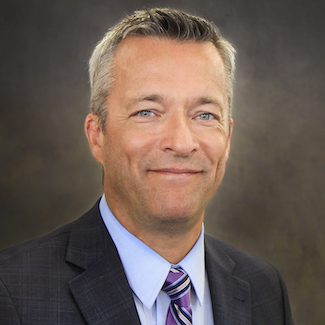 Bill Gray is president, Uponor North America.
Bill Gray is president, Uponor North America.
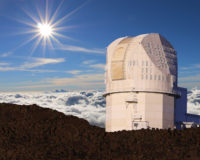
The National Science Foundation’s Daniel K. Inouye Solar Telescope in Maui, Hawaii, uses the largest mirror of any solar telescope in the world. Thanks to its 13-foot-wide mirror, it collects seven times more sunlight than any other solar telescope, producing the clearest, highest-resolution images ever taken of the sun. Not surprisingly, a solar telescope of Read more
The National Science Foundation’s Daniel K. Inouye Solar Telescope in Maui, Hawaii, uses the largest mirror of any solar telescope in the world. Thanks to its 13-foot-wide mirror, it collects seven times more sunlight than any other solar telescope, producing the clearest, highest-resolution images ever taken of the sun.
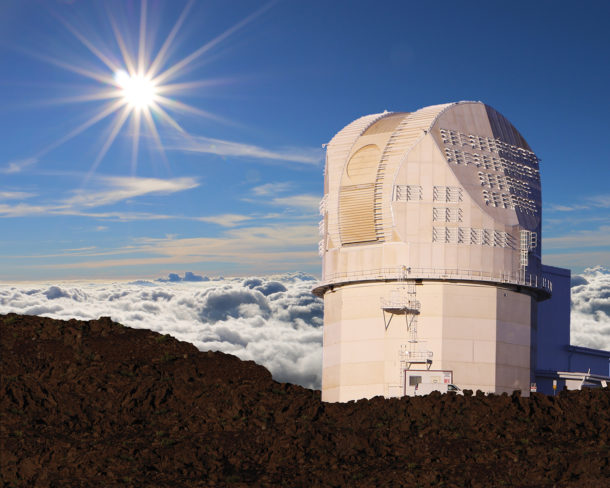
Photos courtesy of NSO/AURA/NSF
Not surprisingly, a solar telescope of this size produces a lot of heat. With a working lifespan of about 50 years – after more than two decades of planning by the National Solar Observatory and its partners – there is a lot that goes into keeping the telescope cooled so it can provide groundbreaking scientific insights.
And that’s where Viega comes to the table.
An enormous, unique project
Eventually, there will be more than seven miles of thermal piping within the telescope and support buildings, explained Lou Szabo, Facility Thermal Systems Site Coordinator for the National Solar Observatory. He spends his days helping to finish construction and commissioning the equipment that recently began collecting images of the sun.
Much of the piping was prefabricated years ago, as various parts of the facility and telescope were being built (construction has taken about 10 years). Traditional methods, mainly welding, were used. But then the project came to a crossroads.
“As the various science instruments are installed and other devices added to the telescope, the final piping needs to be completed or modified, and oftentimes in close proximity to optics or one-of-a-kind electronics that are worth millions of dollars – things that would take many years to reproduce if damaged,” Szabo said. “We can’t have any joining methods that use heat or fumes. It has to be a very clean process.
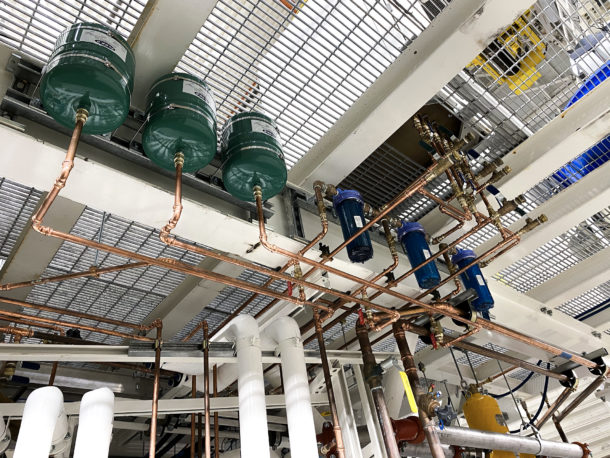
“The only way to install these remaining piping runs is with a joining system that meets the ‘no heat, no fumes, no dust’ requirements – and Viega hit that mark. We can go into these critical areas with very little equipment and complete press joints within inches of sensitive equipment, and the crews don’t have to worry about damaging it.”
As the need for a press-fitting solution surfaced, Szabo was already aware of Viega. He’s been in the piping trades for more than three decades and had previously used Viega.
He also knew that Viega had a large variety of fitting choices and, more importantly, offered plenty of technical support.
“When I presented the press system to the lead engineers and the decision-makers, I had to bring the best system I knew of,” he said. “Viega had been around the longest and had the best technical support if we had a question or got into a bind. We knew we had the reliability of the system behind us. It was really the only choice. I wouldn’t have been comfortable with others.”
Another factor to account for is the ozone conditions. The telescope is located at Haleakalā Observatories, at 10,000 feet in elevation, on the island of Maui. This location allows for great conditions for observing the sun but brings with it other unique elements, too.
“There is a high ozone content in the atmosphere here. Ozone was attacking a lot of rubbers and things, so we use HNBR sealing elements in all of our fittings,” Szabo said. “Some of the coolants we use are more exotic, and the HNBR holds up.”
The bulk of the coolant used is Dynalene HC20. The manufacturer lists both HNBR and EPDM as compatible materials, but the EPDM seal isn’t as resilient with the ozone presence, so Viega’s HNBR sealing elements are the right fit.
Inner workings of the telescope site
A series of primary loops come from the main mechanical/utility building, where all the chillers are located. The loops run to heat exchangers, followed by secondary and tertiary loops. There are dozens of pumps and tanks involved in the complex setup.
Piping in the system includes everything from 6” carbon steel piping to ½” copper tubing. Stainless steel is also used. The miles of piping run coolants and air to keep the telescope project at an appropriate temperature and to keep everything working smoothly. Viega ProPress fittings up to 3” in diameter and MegaPress fittings as large as 2” are used throughout the site.
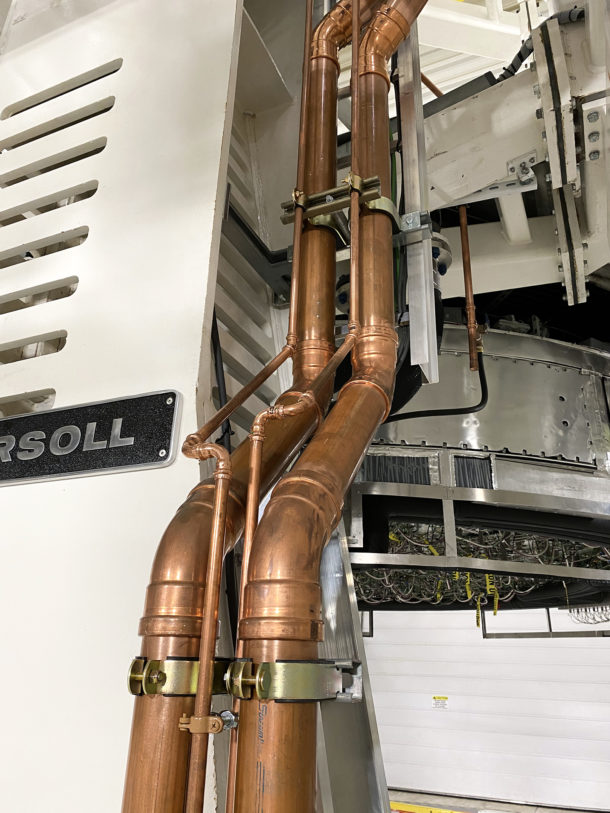
The mirrors and transfer optics are cooled in a variety of ways, including cooled liquid and air. For example, air a few degrees below ambient temperature is typically blown on the back of the mirror cells.
The Dynalene coolant runs at a very low temp, some as low as –2 degrees F, some around 45 degrees. The coolant is also environmentally friendly, which was important for the culturally sensitive site that carried with it many environmental guidelines. Propylene glycol mixtures are also used in some of the scientific chillers.
“A challenge we have in the middle of the Pacific is having fittings available, and that’s why we try to keep our setup as simple as we can,” Szabo said. “It’s also why we went with MegaPress and ProPress. Much of it is available on the islands, whereas other systems are more difficult to get.
“We try to keep a stock of certain fittings and materials on hand and stay ahead of the game. Oftentimes we’re looking at a two- to four-week lead time to get less-common fittings to the island. Thankfully our supplier, PACE Supply, can often get us common fittings within a couple of days.”
Szabo said they strive to keep the piping runs as simple as possible to both limit flow restriction and allow the use of standard elbows, adapters, tees and couplings, which are more readily available on the island.
One-of-a-kind solar research
Plans for the Inouye Solar Telescope (named for the late Daniel Inouye, the U.S. Senator from Hawaii who played a crucial role in getting finances approved for the project and was a big advocate of STEM and science) started 25 years ago. Dr. Claire Raftery, Head of Education, Outreach and Communication for the National Solar Observatory, said innovating how to build something so complicated – and then get it funded – was a massive undertaking.
There was an extensive survey done to determine the location of the telescope. A few hundred sites worldwide were reduced to a short list of 72, which was whittled down to a six. From there, only three met the specific requirements that scientists were looking for, and the location in Maui was chosen.
The Inouye Solar Telescope’s unique location combines clear and vivid blue skies needed to observe the faint corona of the sun with a high elevation and low air turbulence of the atmosphere above the telescope. Thanks to all these things, the telescope can produce the best images of the sun ever taken so that scientists can learn more about the dynamic star.
“We’re studying an object that there’s still a lot of mystery around. Many questions remain unanswered because we don’t yet have the capability to answer them,” Raftery said. “We need more detail, higher resolution – and these are things this telescope will bring to the table. It’s really a fortuitous time to be working in the solar physics industry.”
The telescope is expected to be operational for at least 44 years – four solar cycles – which is one of the benefits of ground-based astronomy, Raftery explained.
“We can expand the abilities of this project much longer than we could from space,” she said. “It’ll never really stop being finished. We can adapt and improve. The team will continue to bring new science experiments online through the life of the telescope.”
Part of the federal requirements from the National Science Foundation include returning the site back to the way it was found, so in 50 years they won’t simply turn off the lights and walk away, but instead the project will eventually be removed from the site after it has run its course.
But with that prospect decades into the future, for now everyone involved with the project is exhilarated as the telescope begins recording images of the sun.
“I remind the crews that they are the only ones in the entire world working on this unique system,” Szabo said. “This is truly a one-of-a-kind project.”
